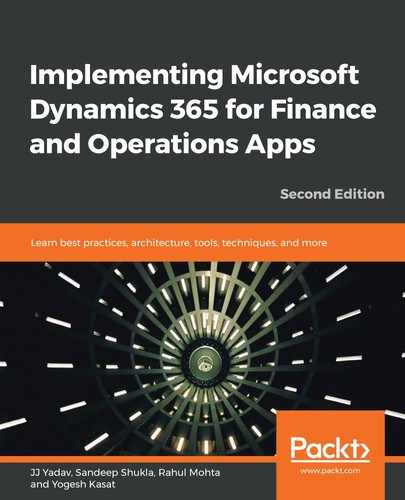In this chapter, we started with understanding the architecture of Dynamics 365 for Finance and Operations. We covered the conceptual architecture, various components, their roles, and how they function. Dynamics 365 for Finance and Operations embraces modern architecture built for cloud deployment. The new architecture, when deployed in the cloud, uses Azure AD for the identity model and Azure SQL as the database, and the application components get deployed using Windows Server containers. On-premises deployment uses AD FS for authentication, SQL Server 2016 for database, and a Service Fabric standalone cluster to deploy application components. In the new architecture, the AOS is hosted on IIS, and batch operations run as a Windows service. Application logic is now modular and separated into an application platform, application foundation, and application suite.
Dynamics 365 for Finance and Operations clients now comprises the modern HTML 5-based web client and mobile app and have seamless integration with Office 365. They use an exclusive development platform on Visual Studio. LCS are used to manage the cloud as well as the on-premises deployment application life cycle—from project inception to upgrade.
You also learned about the deployment choices available: cloud and local business data. The cloud deployment option is the preferred and recommended option, while the local business data option can be useful for an organization having reservations about moving to the cloud due to regulatory or other challenges.
The next chapter is about building the foundation of your implementation project by collecting requirements, and conducting fit-gap analysis of the solution requirement.
